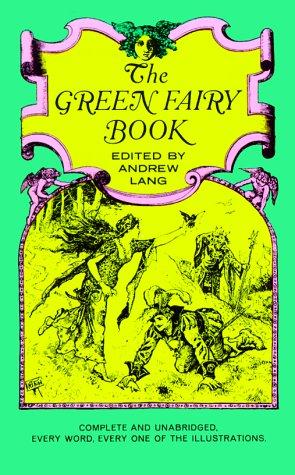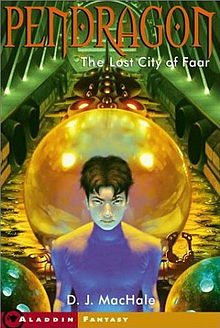[button color=”black” size=”big” link=”http://affiliates.abebooks.com/c/99844/77798/2029?u=http%3A%2F%2Fwww.abebooks.com%2Fservlet%2FSearchResults%3Fisbn%3D9780142501610″ target=”blank” ]Purchase here[/button]
The Whim of the Dragon
by Pamela Dean
In The Secret Country and its sequel The Hidden Land, a pair of magic swords transported five cousins into a world of magic and adventure – the very world, in fact, that they had invented together over several summers of make-believe games. They found the real version of their fantasy world full of disturbing deviations from what they had dreamed up; yet in its most tragic details, they could not divert their well-rehearsed plot line from its course.
They could not prevent the king’s favorite counselor from poisoning the king. They could not spare Ted the terror of battle and a descent to the Land of the Dead. Rather than face the final act of the story – in which Ted must fight a duel with his best friend – the children fled back to their world, leaving behind a letter confessing that they were imposters standing in for the real princes and princesses of the Secret Land, who had been murdered by the evil sorceress Claudia.
Having reached the end of The Hidden Land, you may find yourself caught in one of fantasy lit’s most excruciating cliffhangers. Heightening your discomfort, the third book of the trilogy is out of print – though new copies of the first two installments are widely available. This has to be one of the strangest mischances in the publishing world; for not only does The Hidden Land leave the story incomplete, but it leaves the reader in almost physical pain.
We have just learned that Claudia has been pulling strings on both sides of the portal between our world and the Secret Country. She has used the history of the hidden land to influence the imaginings of Ted, Laura, Patrick, Ruth, and Ellen. She has then used their imaginings to change things in her own world. Even with her house of mirrors burnt down, Claudia is still at large, the children’s adventure incomplete. Yet with so much still at stake, they have gone back to their normal lives in Illinois and New South Wales! How can one possibly stop there? How can one come this far and not see it through to the end?
Thanks to the internet’s resources for buying used books, there is still hope of getting one’s sweaty fingers on The Whim of the Dragon. I only had to wait one maddening week for my well-thumbed copy to arrive. And the reward is a rich, complex, deeply textured final act of a great modern classic. It combines fascinatingly original concepts and minutely-observed character details with an elaborate embroidery of classic poetry, songs, and literary references. And by the way, if someone were to put out an album of the songs in this book, I would buy it.
What becomes of the Carroll children? Why, they must go back to the Hidden Land, of course. This time, however, they will face the wizard Fence and certain other royal counselors knowing who the children really are. They will have to contend with Randolph’s guilty death-wish, Andrew’s plots and suspicions, the wiles of the defeated but still dangerous Dragon King, and a party of shape-changers masquerading as themselves. One half of the party travels north to seek answers from a library of magical lore; the other heads toward the Dragon King’s court, stopping along the way to visit Claudia’s sorcerous stalking-grounds.
They bandy riddles with unicorns, dragons, and creatures whose nature can only be guessed; they gradually find out the stunning truth about what is going on; they cope with visions, dreams, disembodied voices, and encounters with the unquiet dead; and caught between several equally dangerous powers, they struggle not for their own survival but for the future of the Hidden Land itself. In the end, their quest is about the future. Who must surrender to death, and who may return from the dead? Who goes back to the world the Carroll children came from, and who remains to rule the Secret Country? How can family love, romantic love, duty, and honor be served?
When I try to express how well this trilogy pleases me, I find my usual flow of words strangely blocked. I am ashamed to repeat superlatives I have too often used before. What can I say, then, to convince you of my strong feelings? Of course, no one book in this trilogy is perfect in itself. But taken as a whole, as a single sweep from the first line of The Secret Country to the last of this book, it is something better than perfect. In its eccentric wit, its flawless shape, its visionary poetry, its heart-stabbing drama, and the fleshy realism of its characters, it is nothing short of transcendent. It glows, it shines, it twinkles in the firmament of young adult fantasy. It is an apotheosis of the imagination.
Now I must disclose one last thing. It is possible that I am biased toward this book and its trilogy for personal reasons. When I was a bookish kid around the age of this story’s Patrick, I joined several of my own cousins in one or two summers of acting out games of sci-fi/make-believe on the family farm. I relish the memory of those games, though I might die of embarrassment if forced to relive them in detail. The idea of a group of literate, cultured kids mining the Classics to forge their own fantasy world is not merely fantasy to me; it is nostalgia. So though the book had some hard bits in it, the hardest bit was taking leave of it. I must therefore trust to the phrase often repeated in it: “All may yet be very well.”



